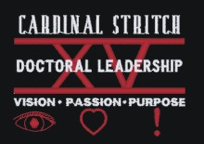Looking back to when I was in high school, I can say I don't think there was a time that I sat down specifically said, "I want to be a leader." I know for sure that I never expressed that I wanted to be an educational leader because entering the field of education came to me by chance.
I went to school to be an electrical engineer, because my dad told me to. After several attempts to pass college level physics, I knew I had to consider other options. So I changed majors, kept taking classes that interested me, and ended up with no direction at the end of my third year of college. I finally went to an academic advisor and asked what degree I was closest to. That is how I ended up in mathematics education.
From there a series of events led me to school administration, to working at a university, to working as an educational consultant. And here I am today, a leader in the field of education.
Gladwell (2008) describes the story of attorney Joe Flom's success as one of chance. His hard work certainly played a role. Robinson (2009) describes the attributes of a successful leader as one who empowers others, has vision, is a good communicator, and is a role model. These qualities were certainly part of who Joe Flom was, but there was also a factor of chance that added to his success. It has been interesting to learn just how large of a part chance does play in our success. I can't find a word to describe what I would call the fifth attribute of a successful leader, but it would be that they are open to follow the direction that life takes them.
Both of our speakers today (6.22.09) described their journey or path to their leadership. For Pulitzer Prize winner Dave Umhoefer, the journey went from missed opportunities to hard work, communication, patience, dedication until his story of success was written. Now his career has led him to public speaking instead of working on the beat for the newspaper. As he described the path of his career, it was a story that very easily could have ended with him working on the beat, living a good life, but not getting to that opportunity that now exists. It was not only his hard work and dedication that led him there, but a series of events that helped him unfold the Milwaukee County pension scandal.
Janice Ereth (2009, June) also described her path as one of making connections and letting the opportunities lead her where she is today. She emphasized in her presentation how important it was to make those connections and take advantage of the opportunities as they occur, to let life unfold your purpose and direction.
In Miodinow's (2008) The Drunkard's Walk, many examples of how chance plays a large role in our lives are given. We also need to understand the role that probability plays in these life events. Just like Roger Maris breaking Babe Ruth's home run record, chance often aids us in our leadership.
Leadership is about dedication, passion, vision, understanding, communication, care, and all of those other attributes that describe good leaders, but we must also be open to conversation (Wheatley, 2005) and allow ourselves to embrace the opportunities that come our way. It is those series of random events that provide the chaos that re-patterns into order that aids us on our leadership journey.
_____________________________________
Dickmann, M. (2009) Deep thoughts about leadership and change. Lecture delivered at the Summer Institute at Cardinal Stritch University, Milwaukee, WI.
Ereth, J. (2009, June) Juvenile Justice and Education. Lecture delivered at the Summer Institute at Cardinal Stritch University, Milwaukee, WI.
Gladwell, M. (2008) Outliers: The story of success. NY: Little, Brown and Company.
Miodinow, L. (2008) The drunkard's walk: How randomness rules our lives. NY: Pantheon Books.
Robinson, E. (2009, June) Four giants steps to developing leaders. Lecture delivered at the Summer Institute at Cardinal Stritch University, Milwaukee, WI.
Umhoefer, D. (2009, June) The (dying) art of investigative reporting. Lecture delivered at the Summer Institute at Cardinal Stritch University, Milwaukee, WI.
Wheatley, M. J. (2005). Finding our way: Leadership for uncertain times. San Francisco, CA: Berrett Koehler Publishers, Inc.







